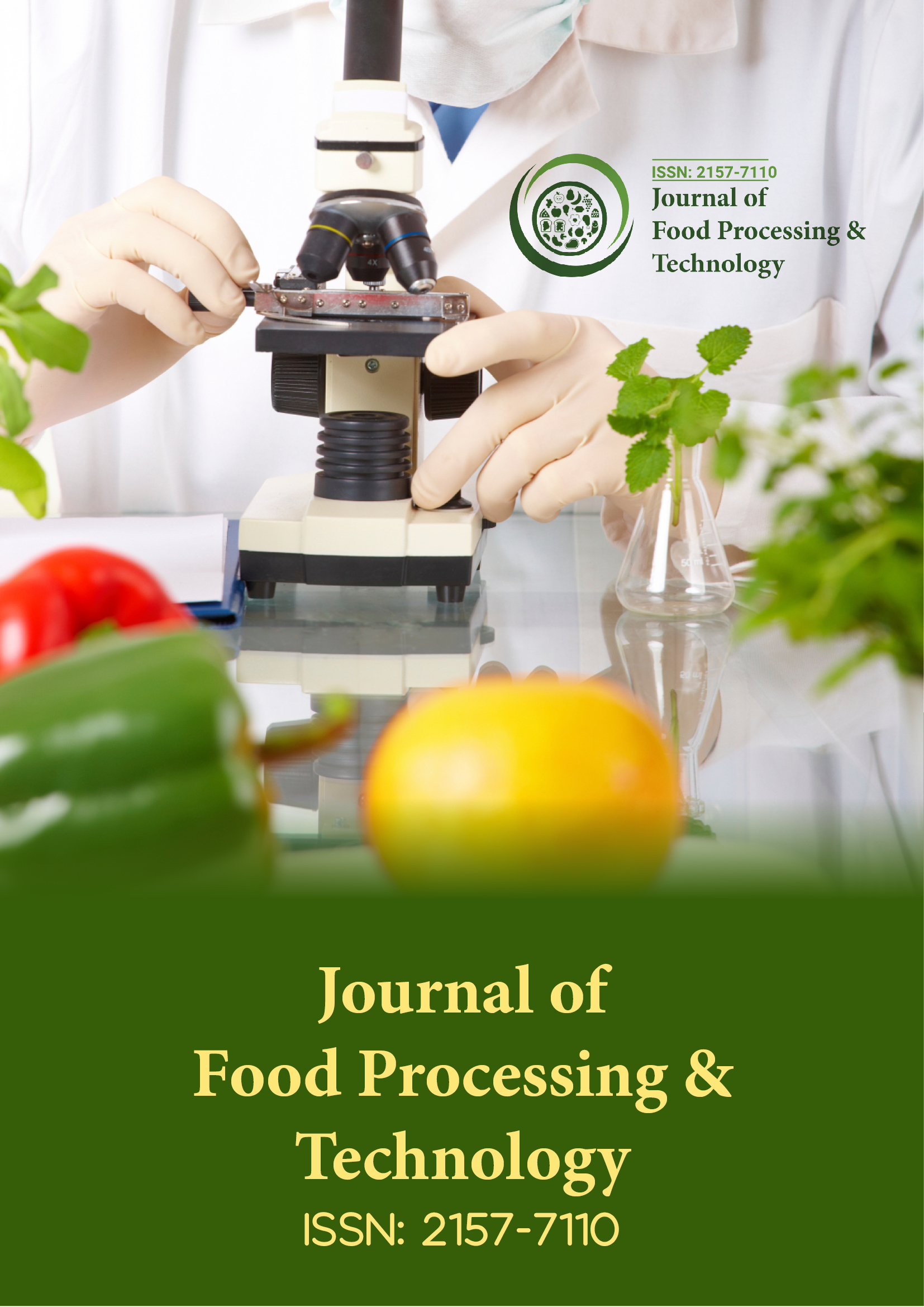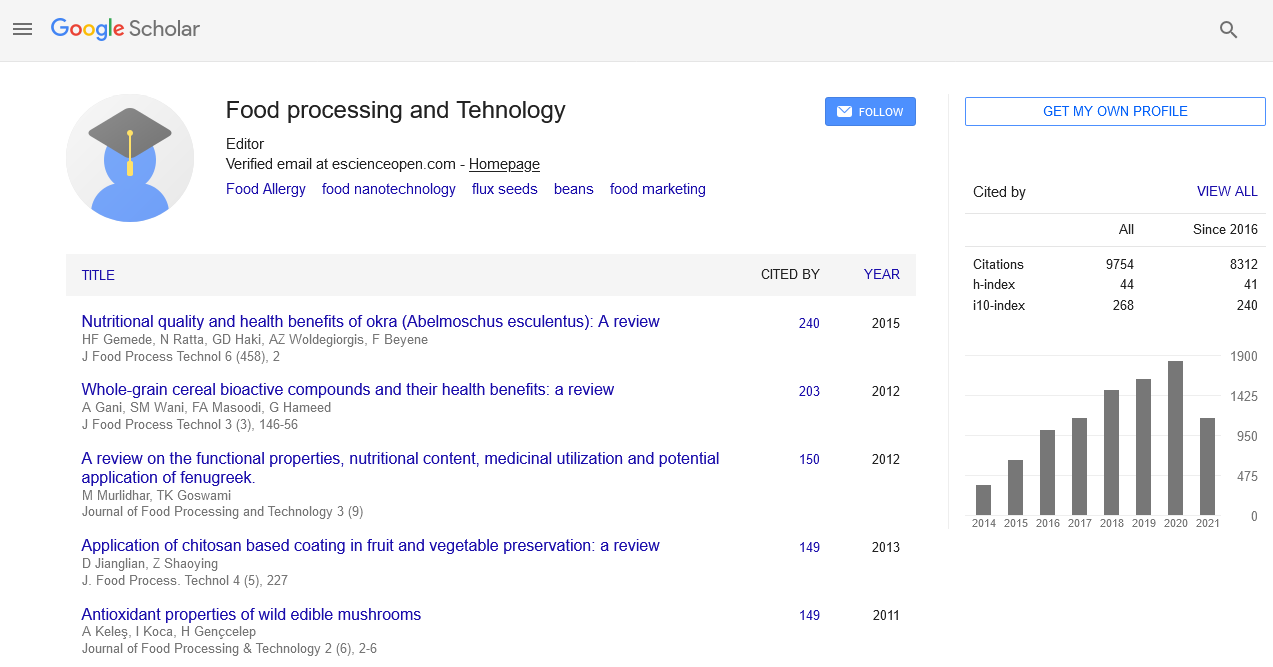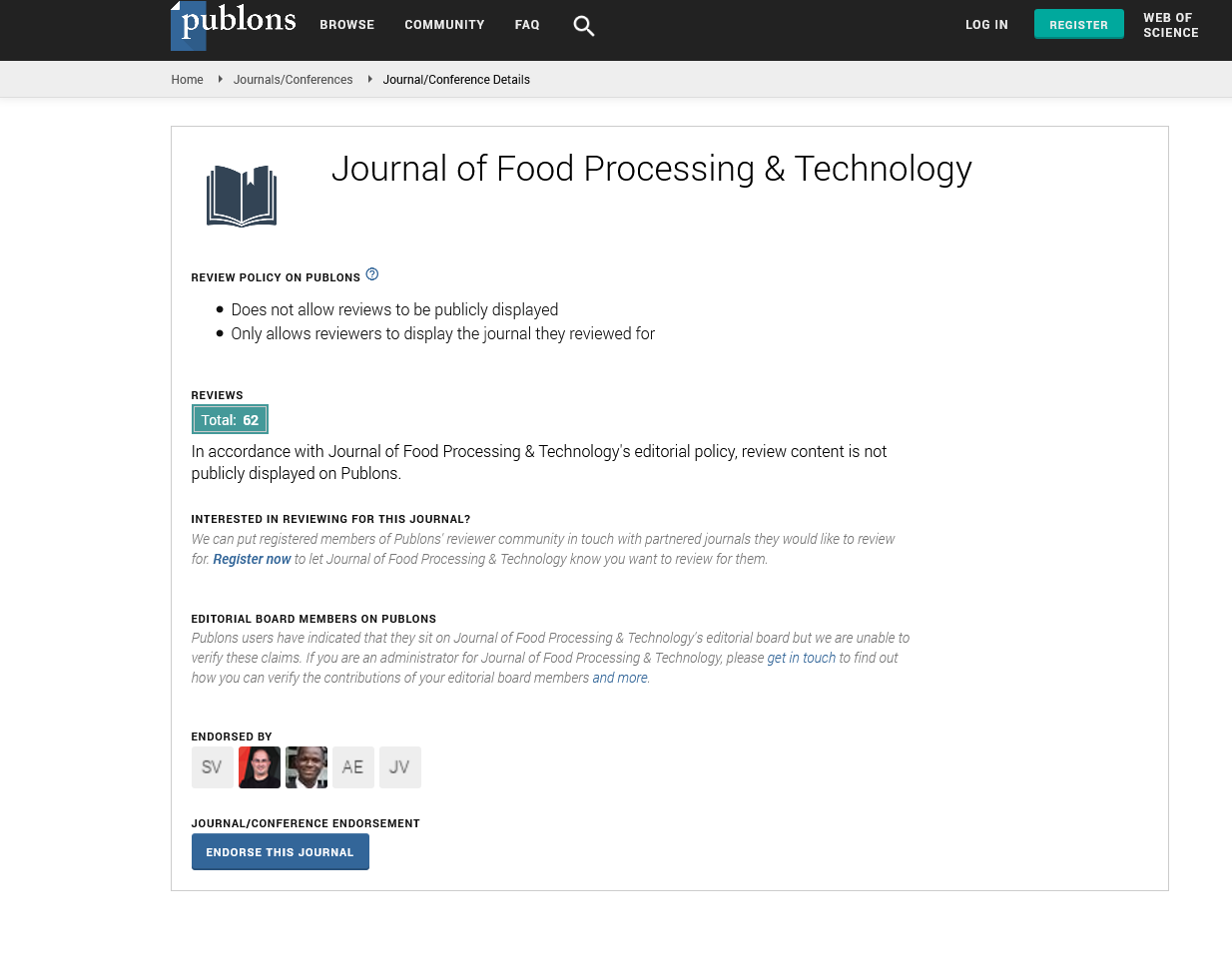Indexed In
- Genamics JournalSeek
- Academic Keys
- JournalTOCs
- China National Knowledge Infrastructure (CNKI)
- Access to Global Online Research in Agriculture (AGORA)
- Centre for Agriculture and Biosciences International (CABI)
- RefSeek
- Directory of Research Journal Indexing (DRJI)
- Hamdard University
- EBSCO A-Z
- OCLC- WorldCat
- Scholarsteer
- SWB online catalog
- Publons
- Euro Pub
- Google Scholar
Useful Links
Share This Page
Journal Flyer

Open Access Journals
- Agri and Aquaculture
- Biochemistry
- Bioinformatics & Systems Biology
- Business & Management
- Chemistry
- Clinical Sciences
- Engineering
- Food & Nutrition
- General Science
- Genetics & Molecular Biology
- Immunology & Microbiology
- Medical Sciences
- Neuroscience & Psychology
- Nursing & Health Care
- Pharmaceutical Sciences
Biosafety Effects of Plant Growth promoting Rhizobacteria and Fungi application in Agriculture on Mammals (Balb/c Mice)
31st World Conference on Food and Beverages
March 09, 2022 | Webinar
D. Habibi
Islamic Azad University, Tehran, Iran
Scientific Tracks Abstracts: Jour of Fo Proce & Tech
Abstract:
The world population is increasing at a very fast rate so the need for food increase quickly. In the traditional agriculture, over 300 types of hazardous chemicals such as pesticides, herbicides, and fertilizers are used to control pests, insects and to increase soil fertility. This affects the agricultural practice a lot and in the end the land remains barren with no fertility. To tackle these problems, the biofungicides such as commercial products made by Trichoderma and bio-fertilizers made with Pseudomonas have been used in different countries. The potentiality of these microorganisms in agriculture is steadily increased as it offers an attractive way to replace the use of chemical fertilizers, pesticides and other supplements. Pseudomonas infections are diseases caused by a bacterium from the genus Pseudomonas. By reviewing the obtained articles and examining the history of Pseudomonas bacteria like Pseudomonas aeruginosa, this bacterium is considered as one of the most important microbes in medicine, industry and agriculture. Trichoderma spp. have been associated with 12 cases of human infections, half of which were peritonitis. Trichoderma harzianum Rifai Strain T-39 is a naturally occurring fungus that is used to protect crops from the harmful gray mold, Botrytis cinerea. The active ingredient is not expected to cause disease or adverse health effects to humans. if so they have harmful effects, we should realize its harms.To investigate the effect of using bio-materials on mammalian tissues, two experiments were designed; the first one was feeding of Balb/c mice with irrigated lettuce with bio-fungicide (mutant and wild) and bio-fertilizers prepared with Pseudomonas (p) fluorescens, p. putida, p. aeruginosa, and the second was the usage of drinking water containing (Trichoderma (T) spores (mutant and wild) or P. fluorescens,P. putida, P. aeruginosa suspensions). Then, blood factors and inflammation of tissues (liver, kidney, spleen and large intestine) in all mice were analyzed after two months. Blood samples were taken from the mice to examine some of the hematological (RBC, MCV, MCH, MCHC) and biochemical (AST, ALT, ALP) factors, and also observed under a microscope. Our results showed that carcinoembryonic antigen (CEA) in these treatment did not stimulate carcinogenic indices. The results from the other blood factors were normal for all strains. Only P. putida showed no adverse effect on the increase in alkaline phosphatase (ALP). The results also showed that the effect of biofungicide on mammalian tissues (spleen and large intestine) was normal. But a small number of mild liver necrosis was seen in the treatment groups with wild Trichoderma, and moderate necrosis in the liver tissue after treatment with mutant Trichoderma isolates. Also in this study of the inflammatory processes in the liver, kidney and large intestine, only minor liver, kidney and large intestine necrosis were observed for the different bacterial strains. So more investigation should be made to determine the impact of these biotic factors on the mammalian tissues before commercialization. Key words: Pseudomonas, Fertilizer, Biological Fungicide, Trichoderma
Biography :
Davood Habibi was born in Iran in 1965.He got his Ph.D. untitled” Modeling sugar beet crop in Karaj/Iran region “in 2002. He has published more than 170 papers in national and international journals and conferences. He is editor-in-chief in Iranian journal of Agronomy and Plant Breeding. He is teaching in Islamic Azad University from 1994. Now he is associated professor and dean of Agriculture Faculty of Islamic Azad Karaj University.


